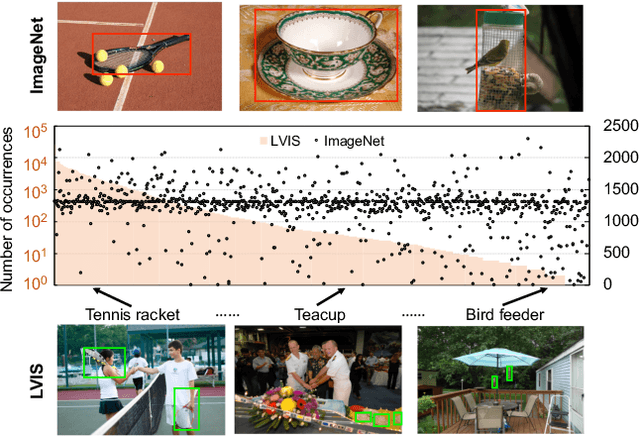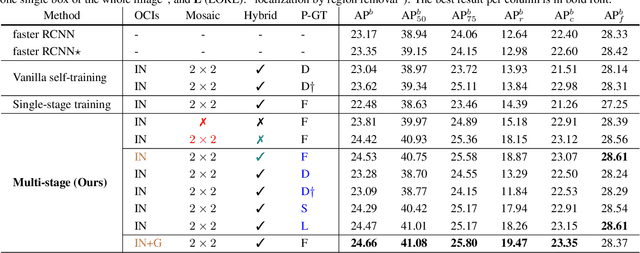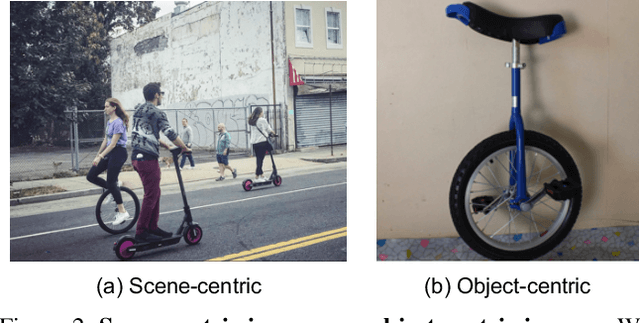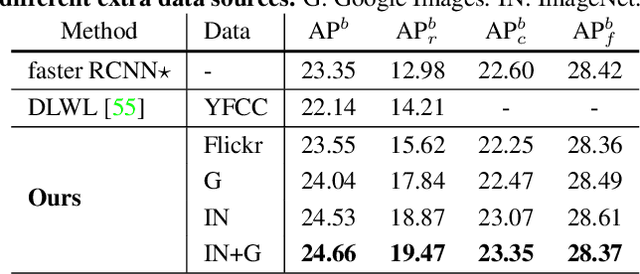A Simple and Effective Use of Object-Centric Images for Long-Tailed Object Detection
Paper and Code
Feb 17, 2021



Object frequencies in daily scenes follow a long-tailed distribution. Many objects do not appear frequently enough in scene-centric images (e.g., sightseeing, street views) for us to train accurate object detectors. In contrast, these objects are captured at a higher frequency in object-centric images, which are intended to picture the objects of interest. Motivated by this phenomenon, we propose to take advantage of the object-centric images to improve object detection in scene-centric images. We present a simple yet surprisingly effective framework to do so. On the one hand, our approach turns an object-centric image into a useful training example for object detection in scene-centric images by mitigating the domain gap between the two image sources in both the input and label space. On the other hand, our approach employs a multi-stage procedure to train the object detector, such that the detector learns the diverse object appearances from object-centric images while being tied to the application domain of scene-centric images. On the LVIS dataset, our approach can improve the object detection (and instance segmentation) accuracy of rare objects by 50% (and 33%) relatively, without sacrificing the performance of other classes.
 Add to Chrome
Add to Chrome Add to Firefox
Add to Firefox Add to Edge
Add to Edge